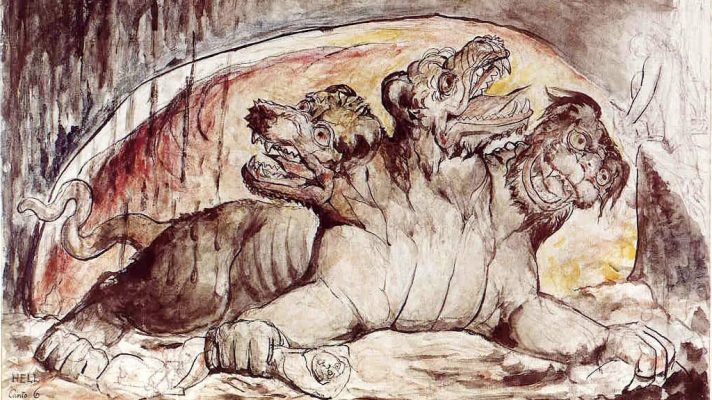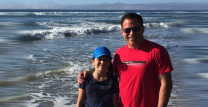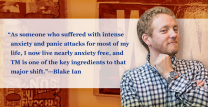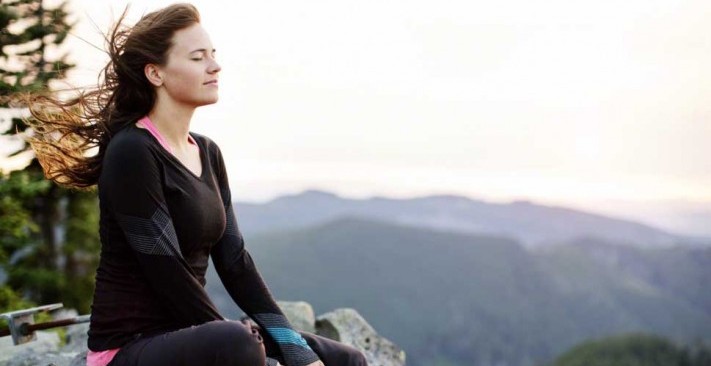Written by Michael J Dougherty, originally published on Medium.
I felt the angry dog’s presence first around 2012. It lived in my Thai Town apartment’s elevator, or so I thought, and every time I left my place and waited for the elevator doors to open, I was struck frozen with the feeling the angry dog would be there, and it would spring from its muscular haunches and tear into my neck.
The angry dog, I discovered, never came out of the elevator, but the specter of it hung over me for years, as absolute as my skin.
Days, weeks, months, and years passed, and I learned to live with the angry dog. We made a pact: I acknowledged its power over me, and it would leave me alone, off to bother some other shut-in resident.
I came to know the angry dog like Cerebus at guard on the banks of the Acheron, snapping at the dead who attempted to escape from the underworld. Leaving became more difficult as the years wore on. Then a natural disaster handed me a gift. Plague settled over humanity in 2020, and we all shut our doors on one another.
That was three years ago, and the angry dog vanished altogether.
I breathed a sigh of relief through countless face masks, measuring each suck of air so as not to take more than I needed. I ate, drank, and slept in one tiny room for months in relative comfort, primarily because I knew that even physically alone, I was not alone in the ongoing horror that kept us from going outside.
Built for catastrophe, I believed, I crawled from one end of my studio and back, daring myself to lose patience or my mind. I rarely did. I thank the arts for this. Had I been unable to draw, write, take pictures, read, and watch movies, I may have disappeared entirely.
Or, as I again dared myself, I would have found the angry dog, taken a run at his demonic, foamy jaws, and ended the story in a bloodbath.
But the angry dog never returned.
Until 2022.
This year, I thought, would have killed me if not for a single reason, but that reason wasn’t the whole truth.
I needed something terribly at the end of 2021 because life opened up old wounds, seemingly for sport or out of boredom, and I honestly thought my mind was going like HAL 9000 singing himself off his mortal coil.
I’d had anxiety since childhood, but I learned to live with it, so it became this low hum in the background of every interaction with the world. When the pandemic hit, it grew from a drone to a growl, and with all that happened in 2021–22, the growl became a roar. I found it hard to sleep. I jumped every time the phone rang. I thought death and disaster were around the corner.
Yet, as I heard the pandemic would end several times and life would return to something approaching normalcy, I felt I couldn’t rejoin it. I wanted more sickness, more silence, more alone time. I craved the autonomy of loneliness, as a therapist once put it.
I wanted to go back to therapy for the answers, like I wanted to teach the angry dog to play “fetch” with my severed arm. I’d done that for decades — treatment, not the arm thing — dating back to sixth grade, when my school sent me to the child psychologist for the bullying I endured — which the bullies didn’t have to do — and continued on and off (mostly on) through the years. I’d finally reached an impasse when a therapist at an online company you’ve heard of said I didn’t need therapy -I needed to go outside. Her recommendation both confounded and delighted me. Maybe I had tunneled enough through my skull, and the answers to my pain were closer than I thought.
So, one morning, I got myself together, went to my local grocery store, picked out some blueberries like I was Henry Fonda, and everything was super — the end.
No.
You can see the angry dog coming up Sixth Avenue, to borrow a phrase.
That day, I flung open the door with a song in my heart, and there stood the beast. The damned thing had fifty heads now; snakes hissed and lunged from his body, and a fire burned black in his eyes. The angry dog pounced and buried his teeth in the door, nearly missing my hands and face. I no longer wanted blueberries. I no longer wanted anything. I collapsed on the floor while the angry dog howled and threw his bulk against the shut door, though realizing he couldn’t get in, he backed away down the hall.
I grabbed my laptop and put on the twelve-hour rain loop I’d played every night since the lockdown started to block the constant ambulance sirens, which I now played around the clock to drown out everything. I didn’t care those ambulances carried the sick and dying and that EMTs risked their lives to stop it. I wished everything would die to have peace, like Vincent Price in that “Twilight Zone” episode.
That night, to fall asleep and drive home the apocalyptic point to my unconscious, I watched the eighth episode of “Twin Peaks The Return,” famous for its “atom-bomb” surrealism. Yet, as I drifted off, something miraculous happened. Instead of drowning in nightmares, I came up for air and, among the waves —
— was David Lynch.
Most people who know me know how much I love this filmmaker, not just as an artist but as a human being in our lives. Lynch has made some of the most daring movies ever produced in the United States and probably anywhere else, and he has shown me the road not taken is always the road to look for and trample. His work has also comforted me because, though it is dark and upsetting, it allowed me to put personal darkness into it and deal with my (seemingly) shattered self.
I owe this man a lot; he honored that by listening to me for a minute the one time I met him and giving me the best Lynchian hug I’ve ever received from a famous person. All this is not the “reason” Lynch is forever in my story, and in the dream, he said nothing, though he fished and had on a bunny costume, so there was that.
But that isn’t it.
It’s because he has practiced Transcendental Meditation for much of his life.
Being a person who is territorial about his psyche, I wasn’t sure if I wanted something like TM invading my space, but there was a free introductory lecture on Zoom, and I attended.
A teacher named Emily, who would come to instruct me later, presented an avalanche of nearly incomprehensible neuroscience and how the brain received bliss from sitting quietly for twenty minutes twice a day with a mantra. When the physical and mental feelings that followed were described, I was immediately sent back to my short time in Thailand. There, I had something of a spiritual conversion, even though I didn’t know about TM. I spoke to Emily one-on-one, and she thought I was on to something back then and that I should seriously consider signing up to learn.
I can’t tell you what happened over the four days of my first course, as it is intensely private and personal to the meditator, but I will say after the first lesson, I left the Los Feliz center and was punched in the face by sunlight. I had only meditated once, yet the world seemed brighter and more colorful. I heard a multitude of sounds in chorus. It was as though the world suddenly synced up with itself and me with it.
I practiced on my own that night and spent every single day after that — forty minutes of my day — meditating.
I smile more now. I sleep better than I ever have. I take a breath before getting upset, which has only happened o few times in the past year. I barely speak loudly, and people I wished away came back to me as support and love. I think more clearly and feel more deeply.
I am wide awake and owe it to Emily and the other teachers and practitioners with whom I’ve meditated — all of it.
I disappoint my brain now when I’m not meditating. It switches on happily and carries me through the day, literally. I feel a lightness in myself I’ve never felt, and there is now a clear divide between the person I was and the person I am now.
“But, but, but what about the angry dog?” you ask. “Surely you didn’t make us read this far without a snack break just to leave us hanging.”
Right.
He’s still there.
I remember a week during this year of transformation. I had a challenging time at physical therapy. In no uncertain terms, I was told that the insurance company had decided enough was enough, and I would never walk again, at least not with their help.
I remember returning home that evening, heartbroken and angry, and in front of my door, asleep and snoring, was the angry dog. It awoke in a rage and backed against my door.
I stayed still and remembered the place and feeling my mind goes to when I’m “in it.”
I suddenly felt a part of the universe again, as if consciousness beckoned me to chill out and flow with it. I’m not a hippy-dippy dude, but it works.
I opened my eyes, and all fifty heads of the angry dog cocked to the side like when a dog is suddenly inquisitive. Then, tail and head down, in trotted over to me.
We sank to the floor, and the angry dog panted and rolled over. I scratched his belly, careful to avoid the snakes, and soon he was asleep again, wagging his tail in happy dreams of chasing souls back into hell.
I returned to my place, meditated my evening meditation, and continued life.
Transcendental Meditation has given me 14,600 minutes (give or take that amount, plus meditating with a new technique before bed with no set time that I’ve practiced since September) of bliss. That’s just over ten days of complete peace and joy, and I’m sometimes confused about why I’m happy for no reason, but I sigh at what I used to think about myself and how well-trained my angry dog was to keep me that way.
I mourn that time more than I regret it.
One last thing: I have spent my entire life being creative. My mother thinks that has been a form of salvation. I look up to people like David Lynch because, even in old age, they still need to put things in the world.
I am grateful he’s been an example.
However, about three months into this meditative journey, I realized I had not done much creating. No pictures or words. Nothing. I wasn’t bereft of ideas — I didn’t feel like doing anything.
And I panicked.
Seeing Emily again, I told her I was terrified that my “art life” — my entire identity, really — was a sham, some cruel cosmic joke. She asked me what place I drew from to create.
I said, “Darkness, rage, sadness. I’m Irish.”
“And how do you feel now?” she asked.
“I’m the happiest I’ve been in years.”
She smiled.
I realized I had to rewire the engine because my creativity needed to come from this new (or rediscovered) place of love, not pain: love for others, the universe, and myself. I’d written in darkness for far too long.
(Author’s note: again, for anyone who knows me creatively, the work remains dark and bizarre — I just write that bizarreness with greater clarity. The world is still the world, after all.)
It took a while, but I’m getting there, and that’s why I’m writing this thing, to tell myself and you that I’m good.
I get up. I create. I take care of myself. I show up.
I’m good.
And that’s saying something.




